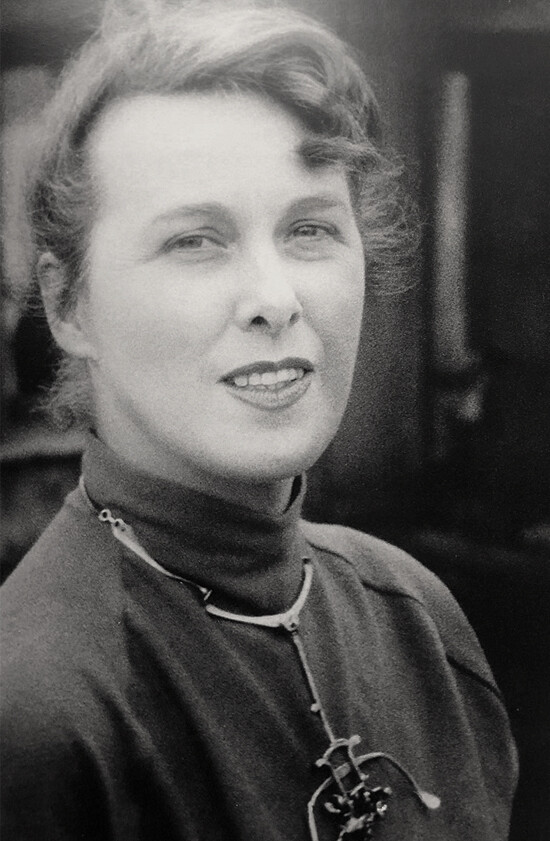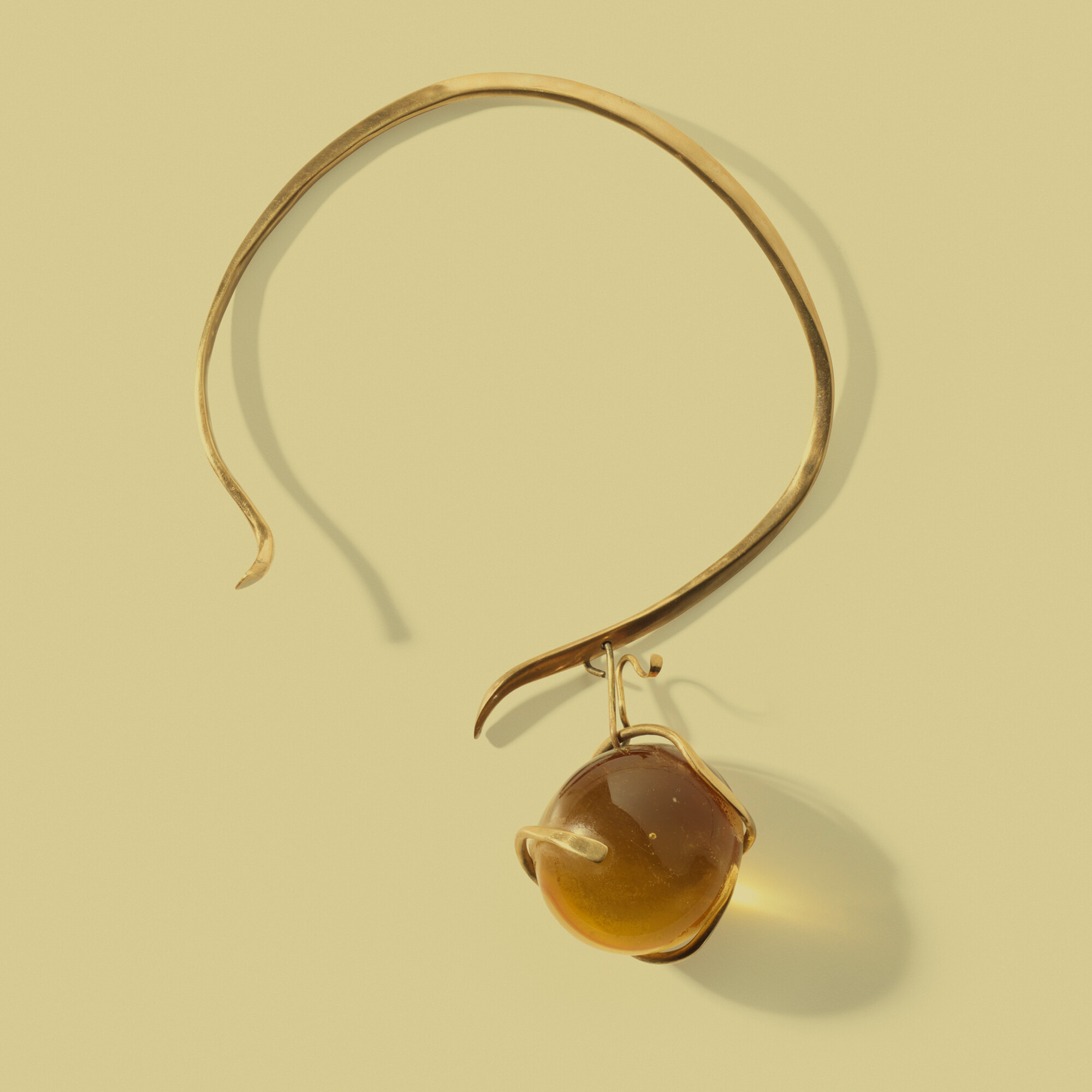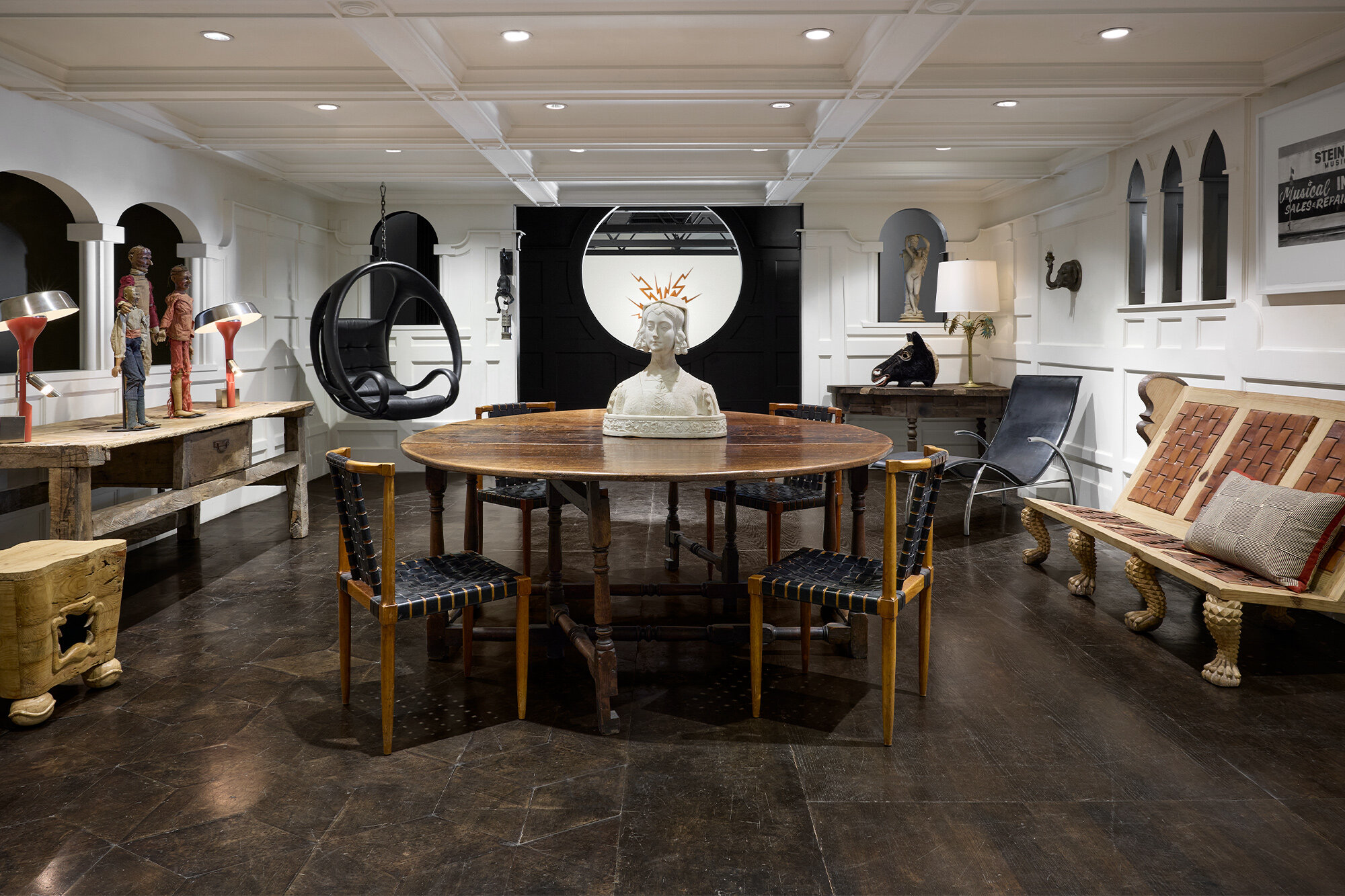163
163
c. 1950
silver, glass 7 h × 5¾ w × 1⅜ d in (18 × 15 × 3 cm)
silver, glass 7 h × 5¾ w × 1⅜ d in (18 × 15 × 3 cm)
estimate: $2,000–3,000
result: $11,970
follow artist
This work will ship from Los Angeles, California.

Claire Falkenstein made her first piece of jewelry around 1945, an ornamental hat pin crafted to wear to an award ceremony held by the Association of Interior Design. From there, she produced jewelry throughout her lifetime, always related to and in dialogue with her large-scale sculptural works. Falkenstein famously declared, “Everything is drawing,” and her masterful harnessing of line is evident in both her twisted sculptures and elegant necklaces. Rather than creating a distinction between these two practices, Falkenstein embraced them both simultaneously, emphasizing their conceptual interplay and technical similarities. Further to this point, she affirmed, “Jewelry [making] is the best schooling I ever had. One can make mistakes, experiment in structure, design and relationship to the human body.” The exquisite pieces offered here demonstrate both Falkenstein's skill as a jewelry maker and her inventive design sensibility.


She continually reassessed her basic vocabulary—from discontinuous reflective surfaces of curved flat metal plates to networks of thick, coiled rods gripping chunks of glittering colored glass. Still attuned with the times, Falkenstein continues to update those forms and vigorously declares herself timelessly young.
Art critic Merle Schipper, 1986
Adam Blackman and David Cruz officially embarked on their venture, Blackman Cruz, in 1993; in the three decades since, they have created—and helped create—countless worlds, purveying objects of beauty and curiosity (dare we say magic?) culled from around the world. Operating from Los Angeles, the pair first showed their wares in a West Hollywood showroom on La Cienega and, in 2007, moved into their current home on Highland Avenue—an expansive space that was formerly the infamous gay nightclub Probe, known not least for basically playing itself in American Gigolo.

If discussing patina and provenance over a once booze-soaked bar seems incongruous, one might argue that such incongruity is characteristic of both Los Angeles and Blackman Cruz. At the center of the “dream factory,” worlds collide—and collision is perhaps what Blackman and Cruz do best. The pair’s “odd couple partnership,” as the New York Times put it, is the force behind an aesthetic sense that is delightfully difficult to pigeonhole. As the title of their recently released book Beauty & Mischief: The Design Alchemy of Blackman Cruz suggests, Blackman Cruz’s eye together encompasses the serious, sexy, and silly, and the myriad permutations therein. You might find, as one does in this auction, a stunning 1902 Carlo Bugatti chair (itself a treatise on material alchemy) next to an antique drum-playing rabbit automaton (restored to working order by an aerospace engineer), or a painstakingly beaded papoose from Borneo alongside an iconic mid-century modern sofa by Poul Kjærjolm, or a softly glowing snake lamp by Frank Gehry. Or impossibly elegant Gazelle lounges by Dan Johnson, or...Or. Or. Or.
Significantly and much to their credit, Blackman and Cruz have not shied away from certain elements of the archetypal curiosity shop. “We’re merchants,” their website declares. “We sell life enhancers.” In leaning into the longstanding lineage of rarity-purveyors, they show that they recognize the preciousness of curiosity itself—and the adjacent elements of surprise and fantasy. They let themselves be led by the search, and the excitement of the find is gleefully passed to their audience. That said, there are certain figures who serve as touchstones for the pair, designers whose sensibilities mesh well with Blackman Cruz’s vision: Bugatti is among them, as well as Pepe Mendoza and Arturo Pani, both from Mexico City and featured amply in the collection offered here. And then there is the Blackman Cruz Workshop, founded in 1998 by Blackman, Cruz, and creative director Lika Moore, offering limited edition lighting and furniture; among the works selected here are two metalworked lamps by Moore and the uncannily “dripping” Leary marble table.
Design is typically a studied thing, where precision takes precedence. Blackman Cruz breathes a little refreshing chaos into the discipline, finding a comfortable perch amidst a multiplicity of exciting tensions: ancient and contemporary, scientific and spiritual, restrained and resplendent. In our era of ubiquitous quantification and optimization, Blackman Cruz extends an invitation to not be afraid of what draws us in—even if it can’t be named or measured. In other words, to revel in the possibilities of enchantment.
Claire Falkenstein 1908–1997
As an artist of singular innovation and energy, Claire Falkenstein explored a range of mediums but became known for her expansive wire structures that often included found glass and wood. Born in 1908 in Coos Bay, Oregon, Falkenstein grew up in Berkeley, California and attended the University of California in 1930, studying sculpture, philosophy and anthropology. She continued her studies in sculpture at Mills College in Oakland and while there, studied under the avant-garde artist Alexander Archipenko.
Falkenstein's first major body of work emerged in the early 1940s, with her Set Structures, which her made of wooden elements that could be disassembled. In 1947, she began teaching at the California School of Fine Arts and in 1950 she re-located to Paris; this move would prove pivotal to Falkenstein's work, as she encountered influential artists of the European avant-garde, as well as Peggy Guggenheim, who would become a major supporter of Falkenstein's work. During this time, jewelry became a main focus for Falkenstein; Working out of a tiny studio and with not much money, Falkenstein created works inspired by the free-form abstraction popular among Paris’ vanguard with castoff and nontraditional materials. A significant breakthrough for Falkenstein came in 1961, when Guggenheim commissioned her to design the gates at the Palazzo Venier de Leoni in Venice—a work regarded as one of the finest of her prodigious career and one that illustrates Falkenstein’s inimitable ability to create forms that exist beyond the physical space they inhabit.
Falkenstein eventually returned to the United States in 1963, settling in Venice, California, where she lived until her death in 1997. She created enduring large-scale public works during this time, most notably, the doors, gates and windows at the St. Basil Catholic Church in Los Angeles. At the later end of her life, she had turned her focus to painting. Her works are held in such prestigious collections as the Pompidou Centre, Paris, the Tate, London and the Smithsonian American Art Museum, Washington, D.C.
Auction Results Claire Falkenstein